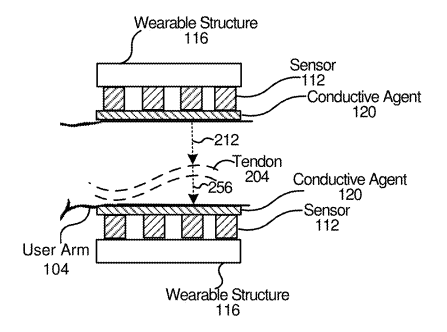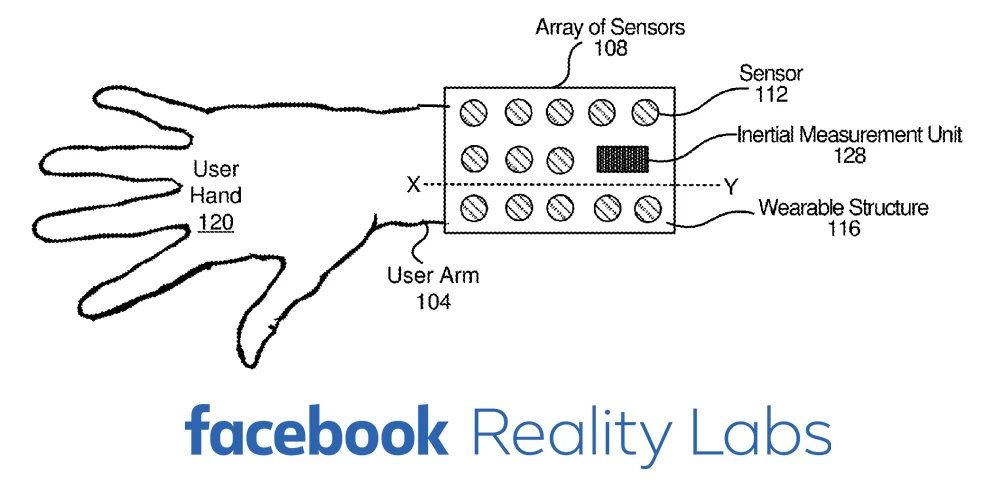Facebook filed a patent application for a wristband which performs finger tracking by reading electrical signals inside the user’s wrist. Machine learning is used to convert these signals into finger positions.
Two variations of the device are described. In one, an active signal is sent through the wrist. Based on how the signal changes passing through the tendons and muscles of the arm their position can be determined.
In another variation no active signal is sent. Instead, the device directly reads the impedance of the arm without a probe signal.

Facebook doesn’t seem to be the only company working on this interesting concept however. New York based CTRL-Labs posted a video on YouTube of a seemingly similar wristband:
https://www.youtube.com/watch?v=4NMhx5WlpEs
The ability to directly use each of your fingers adds an entirely new level of interactivity to VR. However, that ability is absent from almost all consumer VR headsets today. Leap Motion shipped a finger tracking kit for the Oculus DK2 all the way back in 2014, but the tracking quality left a lot to be desired.
Facebook is already heavily researching optical finger tracking. HTC announced finger tracking for the Vive Pro late last year, but that hasn’t shipped yet and the tracking quality is currently unknown.
If the device described in the patent truly works, it could bring finger tracking to VR without having to do power hungry processing on multiple cameras pointed at your fingers. Furthermore, since it doesn’t rely on cameras the tracking would work at all angles regardless of the headset’s orientation. We’re excited to see what finger tracking solutions VR companies will deliver in the coming years.






























